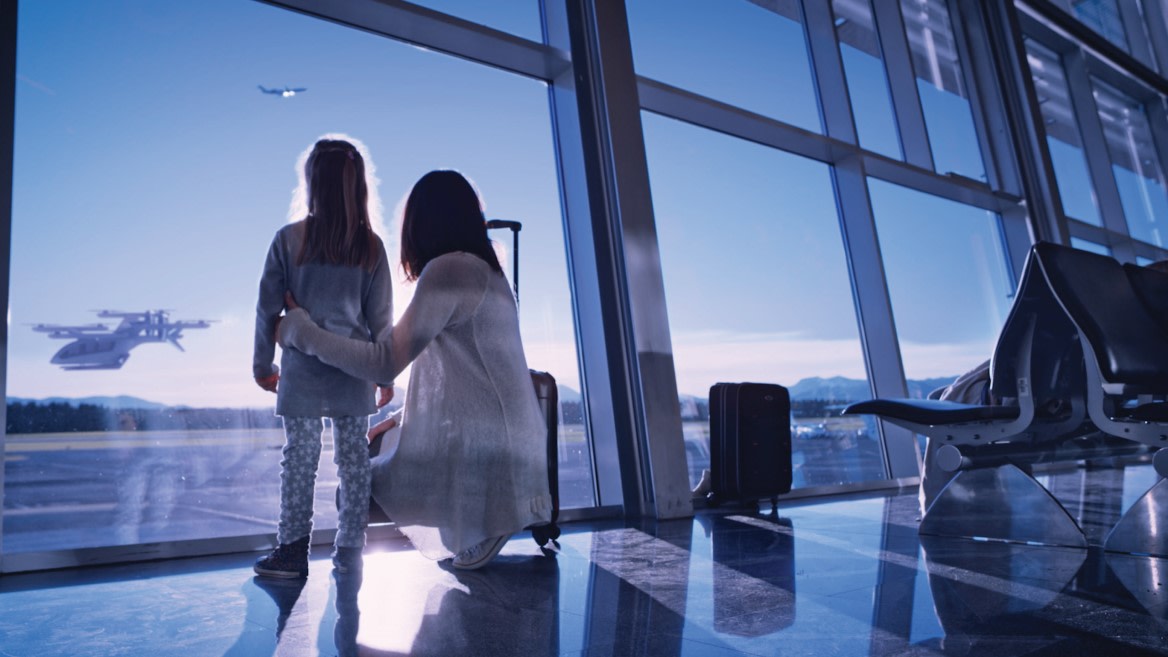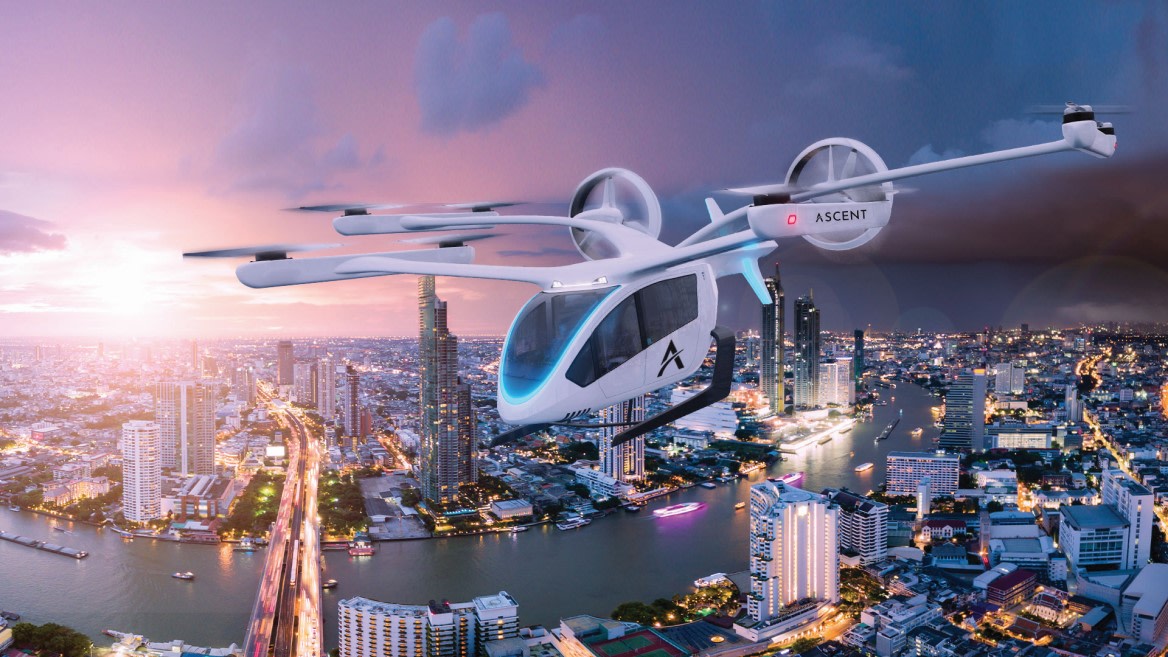
Air Taxis Preparing for Takeoff
With many players looking to bring eVTOLs to Australian skies in just a few short years, Hannah Dowling sat down with Embraer flying taxi offshoot Eve to talk about where we stand and what’s ahead in the urban air mobility industry.
The urban air taxi market is expected to expand dramatically in the next two decades, with current estimates suggesting the industry could be worth some $1.5 trillion by 2040. Many of the front-runners in the air taxi race are claiming to have their vehicles ready to takeoff by 2025, however whether or not cities will be prepared enough to facilitate their entrance is another story altogether.
Embraer offshoot Eve Urban Air Mobility is one of a number of major existing transportation players, such as Hyundai and Airbus, to invest heavily in the research and development of futuristic air taxi vehicles and other air mobility solutions, alongside a slew of newcomers and startups.
However, Embraer continues to make headlines, especially in Australia, due to not only developing its very own electric vertical takeoff and landing (eVTOL) vehicles, but also through its dozens of partnerships with startups and local business operators in this country, to test out infrastructure technologies and solutions. With this, Eve seems determined to make electric air taxis a new staple in Australian, and global, cities, and is slated to soon be a major player in this budding industry.
Speaking on the Australian Aviation Podcast, Eve’s vice-president of business development for the Asia Pacific region, David Rottblatt explained that while the concept of a large-scale urban air mobility ecosystem, a la The Fifth Element or Blade Runner, does seem futuristic, the concept of using rotor aircraft – helicopters – for popular intra-city hops has been used for decades already.
“If you look back all the way to 1947, with the launch of Los Angeles Airways, and in the 1950s, New York Airways, this idea of saving time and getting people to their destination sooner and more efficiently has really been a concept that we’ve been incubating ever since the 40s and 50s,” Rottblatt says.
“The procedures and the infrastructure that we’ve developed to support this conventional version of what we now call urban mobility, have been very successful at getting this industry to continue to mature.”
Rottblatt points to aerial rideshare platforms such as Blade in New York City, Ascent in the Asia Pacific, Helipass in France and Flapper in Brazil, as examples of today’s urban air mobility solutions, which all use traditional rotorcraft to complete short hops throughout the city.
However, Rottblatt said that the crucial key to our future air taxi ecosystem is its ability to scale at a rate that traditional rotorcraft cannot.
“What we see around the corner with urban air mobility developments and electric air taxis, is now being able to offer a more accessible price point for a broader swath of the population,” he said.
Advancements in electric battery technologies, to the point of being accessible and functional for aviation, means that these vehicles are cheaper to run and easier to maintain than traditional petrol aircraft.
“Operators can then pass those cost savings on to the consumer, meaning what was once a luxury is not an option that many people can choose from,” added Rottblatt.
There are still a number of obstacles before we can realistically see the air taxi industry truly take off. Firstly, Embraer and other players foresee the use of dozens, if not hundreds, of these vehicles operating in inner-city airspace at one time. Rottblatt says they will be a “community resource”, and will become of increasing importance as cities grow larger, connecting more people to the CBD. However, with possibly hundreds of these vehicles operating at once, the ability to monitor and organise the airspace becomes impossible to do without some degree of automation.

Perhaps more significantly, it seems the vehicles themselves could ultimately become entirely autonomous, in a move that will likely be crucial to the feasibility of the air taxi business model.
“I think I speak for the majority of industry, when I say that we’re excited to evolve from conventional piloted aircraft to remotely piloted or more autonomous forms of flight, as soon as possible,” Rottblatt says.
“This is how we get to an increasingly affordable price point for our future passengers.
“When technology is ready to manage much of the responsibilities that a pilot has done in the past, that means that you no longer have to pay for that pilot in your ticket cost.”
Given that technology and regulators are not yet at the stage of supporting full-scale automated air taxi systems, the market will see piloted operations to start with, however that could change over the years.
“You can then also replace that pilot seat with one or two additional passenger seats. So, whereas before like in Eve’s aircraft, we have a four-passenger cabin and room for one pilot. You now can have a six-passenger cabin, thereby sharing the cost of the flight with two additional people and without paying for the cost of the pilot. So, this is how we get to scalability because we were able to continuously find ways of providing a much more accessible price point to a broader swath of the population,” says Rottblatt.
“When you look at the type of technology that’s available today, we’ve had automation in the cockpit and in aviation for quite some time”
Acknowledging that the concept of unpiloted aircraft operating by the dozen above urban skies could be unnerving for most, Rottblatt says it is the natural next-step for both artificial intelligence technologies and aviation.
“When you look at the type of technology that’s available today, we’ve had automation in the cockpit and in aviation for quite some time,” he says. “We have things like auto pilot, auto land, auto takeoff, and there are some manufacturers that have already demonstrated an ability for eVTOL aircraft to carry passengers with either remotely piloted aircraft, or completely autonomously. So, we know that the technology is there.”
However, the key obstacle, according to the vice-president, is getting the regulators of each country to agree to automated and pilotless air taxi operations, a decision which will likely also be swayed by public perception.
“I think it’s only natural, and a healthy degree of skepticism is more than warranted,” he says. ”And I’ll say that people thought very similar things when we had horses and buggies pulling us around, and then there was the introduction of the automobile. People thought that this was a very niche thing, and it would never take over and look at where we are today.”
Rottblatt adds that the industry has a long way to go with global aviation regulators, however he is confident that Eve will be able to prove that autonomous or remotely piloted operations are “at least as safe, if not safer” than piloted operations.
To hear more, tune in to our episode with David Rottblatt entitled ‘Embraer’s Eve on the future of flying taxis in Australia’ on the Australian Aviation podcast. Available now on Apple Podcasts or Spotify.












